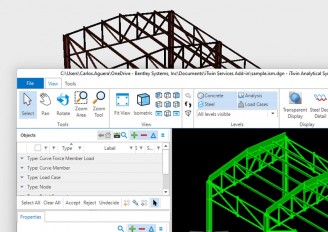The USGBC shares a report showcasing the progress in sustainable green building practices

Elizabeth Beardsley, Senior Policy Counsel for the US Green Building Council (USGBC), shared updates on COP28 developments, highlighting key announcements in the building sector. It is mentioned that building an environment for future populations entails consideration of design trends and sustainable building requirements. Furthermore, the world is significantly influenced by governing bodies, especially in cities where construction is indicative of economic growth.
USGBC President and CEO Peter Templeton, in collaboration with Arup, launched the report "State of Decarbonization: Progress in U.S. Commercial Buildings 2023" at COP28. The report, presented at the Buildings Pavilion and hosted by the Global Alliance for Buildings and Construction, consolidates information on green buildings and tracks the progress of change in the commercial real estate sector. It offers a comprehensive overview of various indicators, including greenhouse gas emissions, commercial energy consumption, clean energy grid generation, and building quality.
In the United States, green building design has become a lucrative industry, boasting a total revenue of approximately US$88 billion in 2022. This industry is expected to continue growing as organizations prioritize the creation of more efficient spaces using lower-carbon materials. The USGBC plays a crucial role in setting expectations to integrate sustainability into construction and building design. The organization's vision extends beyond industry to encompass the communities affected by its activities.
The USGBC adheres to the standards outlined in Leadership in Energy and Environmental Design (LEED) certification, considering it the world's most influential system for promoting green building practices. LEED is a widely recognized accreditation for sustainable building practices. It not only signifies an increased environmental commitment but also offers a framework for organizations that aim to minimize the environmental impact of their construction operations. LEED certification is applicable to both organizations in the construction sector and individuals, providing a valuable recognition (the LEED Accredited Professional designation) for those involved in sustainable building design or operations.
Sources: sustainabilitymag.com, usgbc.org/articles, usgbc.org/resources
Want to read more like this story?

The prospects for carbon-neutral buildings
Oct, 27, 2023 | NewsIn the United Kingdom, buildings account for 33% of greenhouse gas emissions and 40% of global ener...

The most significant principles of sustainable architecture
Dec, 01, 2023 | NewsOver time, sustainable architecture has assumed various names and forms. The definition of sustaina...

New open source tool to evaluate buildings’ environmental impact
Aug, 15, 2018 | NewsAn open source computing tool that is capable of calculating CO2 emissions in every phase of a build...

Green steel: the new sustainable material that will reshape the construction industry
May, 21, 2025 | NewsThe building and construction sectors are major contributors to climate change; therefore, the indu...

4 Dead in Nigerian Building Collapse
Nov, 09, 2013 | NewsA four-story residential building under construction in one of the most expensive communities in Afr...
ACE
Dec, 06, 2013 | Software
Digitalization could assist the construction industry reducing its carbon emissions
May, 28, 2024 | NewsIt is well known that the global construction industry significantly contributes to the world's car...

Sustainable building materials and products: the latest trends
Jun, 28, 2023 | NewsArchitects and designers face numerous challenges when creating sustainable buildings or structures...
Trending

Spectacular interchanges around the world

New Release - STAAD.Pro 2024 - 2

ADINA 2025 for Structural WorkSuite

ADINA 2025 New Release!

Concrete Buildings as Rechargeable Batteries

Powerful earthquake shakes central Philippines, dozens killed

Indonesia school collapse: three fatalities and dozens injured

